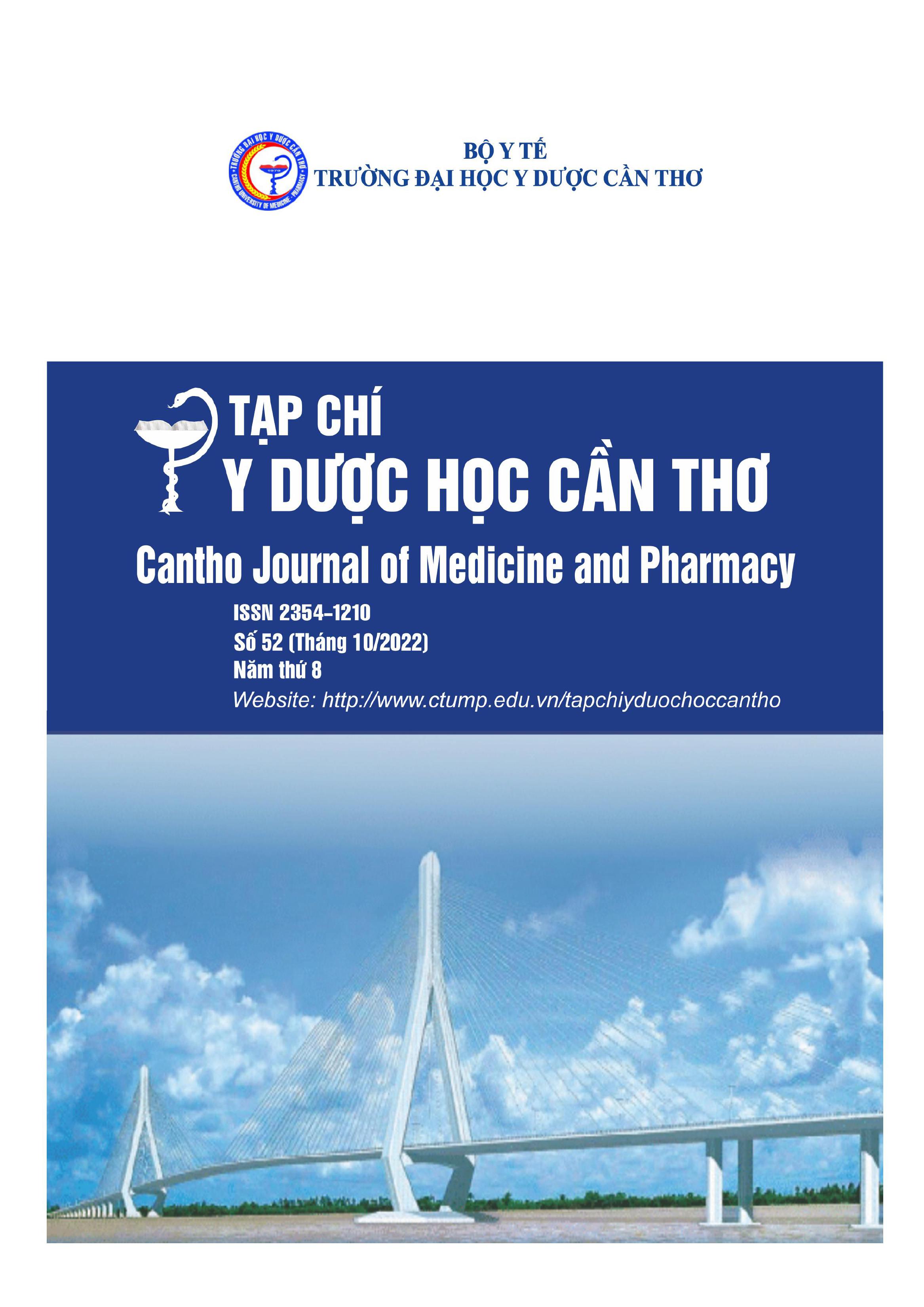RESEARCH TO DETERMINE THE THICKNESS OF PALATAL MASTICATORY MUCOSA AND SOME RELATED FACTORS IN THE VIETNAMESE ADULTS AT JW HOSPITAL KOREA IN 2021-2022
Main Article Content
Abstract
Background: Connective tissue graft in combination with a coronally advanced flap is considered the gold standard for treatment of gingival recession and soft tissue augmentation around tooth and implant. Palatal masticatory mucosa is the main donor area of connective tissue graft. Objectives: The aim of this study was to measure the thickness of the palatal masticatory mucosa of Vietnamese adults on Cone Beam Computerized tomography (CBCT) image and influencing factors. Materials and methods: 48 periodontally, healthy dentate Vietnamese adults are CBCT taken with an acrylic X-ray guide stent. Thicknesses of palatal masticatory mucosa of the canine, first and second premolar, first and second molar are measured on CBCT image at various points distanced from gingival contour 2mm, 5mm, 8mm. Some parameters such as age, gender, BMI index, gingival genotype are also obtained. Results: The mean thickness of palatal masticatory mucosa in Vietnamese adults is 2.99±0.84mm. No significant difference was found between age group, gender, group below and abow average BMI, gingival genotype. The mean thickness of palatal masticatory mucosa of canines (3.23±0.74), first premolars (3.07±0.75), second premolars (3.18±0.87) are significantly higher than those of first molars (2.75±0.76) and second molars (2.72±0.91) (p=0,00). Conclusion: CBCT can be considered a non-invasive method for accurate and consistent measurement of the palatal masticatory thicknes with the assistance of X-ray guide stent. The most suitable region for harvesting connective tissue graft is canines, first premolars, second premolars region.
Article Details
Keywords
Palatal masticatory mucosa, CBCT, Vietnamese adult, connective tissue graft
References
2. Cairo F. J. P. (2017), “Periodontal plastic surgery of gingival recessions at single and multiple teeth”, Periodontology 2000. 75 (1), pp. 296-316.
3. Gupta P. et al. (2015), “Accuracy of cone-beam computerized tomography in determining the thickness of palatal masticatory mucosa”, Journal of Indian Society of Periodontology. 19 (4), pp. 396.
4. Harris R. J. (1992), “The connective tissue and partial thickness double pedicle graft: A predictable method of obtaining root coverage”, Journal of periodontology. 63 (5), pp. 477-486.
5. Karthikeyan B. et al. (2016), “The versatile subepithelial connective tissue graft: a literature update”, General dentistry. 64 (6), pp. e28-e33
6. Kasaj A. J. C. D. R. (2019), “Gingival recession coverage using soft tissue substitutes”, Clinical Dentistry Reviewed. 3 (1), pp. 23.
7. Kim D. M. et al. (2015), “Periodontal soft tissue non–root coverage procedures: A systematic review from the AAP regeneration workshop”, Journal of periodontology. 86, pp. S56-S72
8. Kuriakose A. et al. (2012), “Assessment of thickness of palatal mucosal donor site and its association with age and gender”, journal of Indian Society of Periodontology. 16 (3), pp. 370.
9. Puri K. et al. (2019), “44-year journey of palatal connective tissue graft harvest: A narrative review”, Journal of Indian Society of Periodontology. 23 (5), pp. 395
10. Said, K. N., Abu Khalid, A. S., & Farook, F. F. (2020). Anatomic factors influencing dimensions of soft tissue graft from the hard palate. A clinical study. Clinical and Experimental Dental Research, 6(4), pp.462-469.
11. Schacher B. et al. (2010), “Direct thickness measurements of the hard palate mucosa”, Quintessence international. 41 (8).
12. Shen, C., Gao, B., Lyu, K., Ye, W., & Yao, H. (2021). Quantitative analysis of maxillary palatal masticatory mucosa thickness and anatomical morphology of palatal vault in Zhejiang province, Journal of Zhejiang University. Medical Sciences, 50(7), pp.1-8.
13. Song J. E. et al. (2008), “Thickness of posterior palatal masticatory mucosa: the use of computerized tomography", J Periodontol. 79 (3), pp. 406-412.
14. Ueno D. et al. (2014), “Palatal Mucosal Measurements in a Japanese Population Using Cone‐
Beam Computed Tomography”, Journal of Esthetic and Restorative Dentistry. 26 (1), pp.48-58.
15. Yaman D. et al. (2014), “Thickness of palatal masticatory mucosa and its relationship with different parameters in Turkish subjects”, International Journal of Medical Sciences. 11 (10), pp. 1009.


